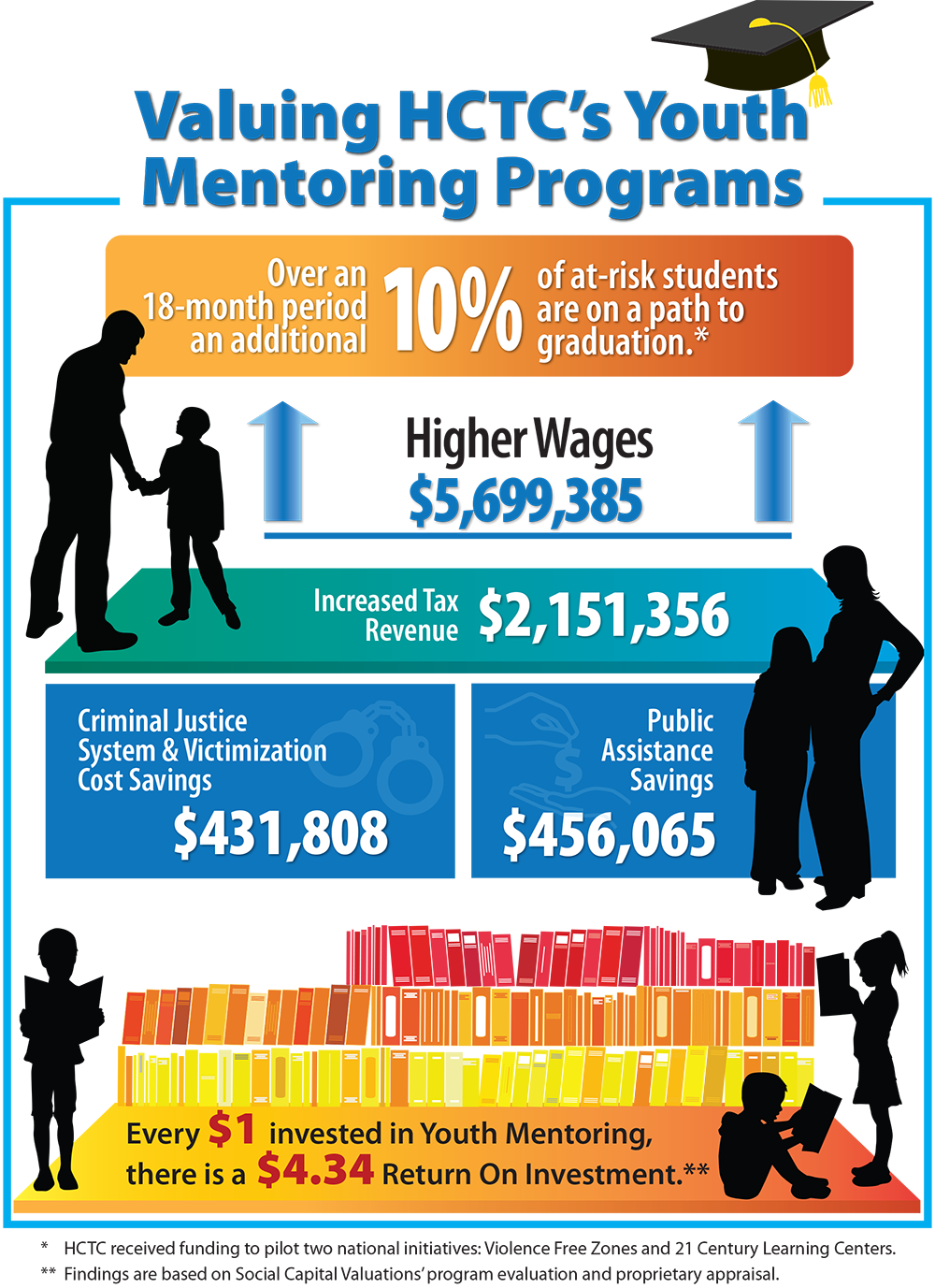How It Works
Projecting Impact and Value in Real Time
To demonstrate how our analysis works, we will introduce you to one of our clients, Hartford Communities That Care, who engaged Social Capital Valuations (SCV) to produce a 1st Generation evROI analysis of their Mentoring Plus tutoring program. We conservatively estimated a return on taxpayers’ investment of $4.34 for every $1.00 invested.

For the purposes of this 1st Generation evROI analysis we relied upon a snapshot of the changes in certain near-term indicators among the 150 participating students as predictors of high school graduation. The problem of predicting who is at risk of dropping out has been the topic of intensive study for decades. Our literature search uncovered a recent comprehensive study done for Montgomery County Public Schools that applies to the K-8 population targeted by the Hartford initiative. It identified Early Warning Indicators (EWIs) namely, Attendance, Behavior, and Coursework. SCV used these findings to identify the number of Hartford students who were once off-track prior to their program involvement, but who, after program participation, are now on-track to graduate from high school.
Using studies such as the one described above is typical of our 1st Generation evROI analysis where our calculations rely upon data from randomized control trial (RCT) and/or quasi-experimental studies done on analogous programs in order to fill gaps in knowledge about the program under study. By so doing, we provide feedback to funders and providers in real-time without waiting years to determine the impact of a particular intervention/program.
High school graduation provides a critical benchmark, both for the participating students and the community. High school graduates earn higher incomes than their peers who drop out. The added income, of course benefits the graduates. However, it also benefits the community economically, by increasing tax revenue and decreasing public assistance costs. Furthermore, using data from a University of Washington study on Communities That Care, SCV was able to credit HCTC with cost savings associated with students’ decreased involvement with the criminal justice system and decreased victimization.
Benefits
- Provides a foundation for sustainability, because it is business and economic focused
- Engages providers and current stakeholders
- More transparent, in-depth and inclusive of multi-dimensional aspects of any operation
- Identifies and attracts new stakeholders
- Creates a blueprint for improved management and operational strategies
- Improves accuracy and value of data collection
- Provides a clearer and more unifying vision of the organization’s mission and work
- Informs the design of an RCT or quasi-experimental evaluation when/if resources are available
